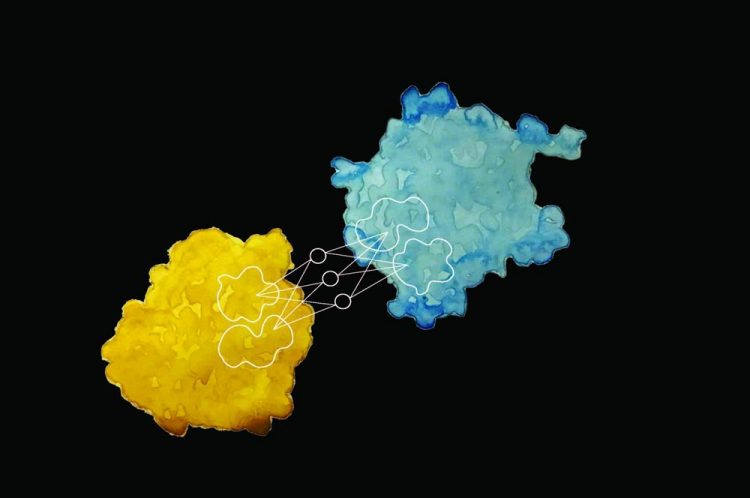Predicting a protein's behavior from its appearance

Researchers at EPFL have developed a new way to predict a protein's interactions with other proteins and biomolecules, and its biochemical activity, merely by observing its surface. Credit: Laura Persat / 2019 EPFL
Researchers at the Laboratory of Protein Design & Immunoengineering (LPDI), part of EPFL's Institute of Bioengineering at the School of Engineering, working with collaborators at USI-Lugano, Imperial College and,Twitter's Graph Learning Research division have developed a groundbreaking machine learning-driven technique for predicting these interactions and describing a protein's biochemical activity based on surface appearance alone.
In addition to deepening our understanding of how proteins function, the method – known as MaSIF – could also support the development of protein-based components for tomorrow's artificial cells. The team published its findings in the journal Nature Methods.
Data-driven research
The researchers took a vast set of protein surface data and fed the chemical and geometric properties into a machine-learning algorithm, training it to match these properties with particular behavior patterns and biochemical activity.
They then used the remaining data to test the algorithm. “By scanning the surface of a protein, our method can define a fingerprint, which can then be compared across proteins,” says Pablo Gainza, the first author of the study.
The team found that proteins performing similar interactions share common “fingerprints.”
“The algorithm can analyze billions of protein surfaces per second,” says LPDI director Bruno Correia. “Our research has significant implications for artificial protein design, allowing us to program a protein to behave a certain way merely by altering its surface chemical and geometric properties.”
The method, published in open-source format, could also be used to analyze the surface structure of other types of molecules.
###
Source: P. Gainza, F. Sverrisson, F. Monti, E. Rodolà, D. Boscaini, M. M. Bronstein, and B. E. Correia, “Deciphering interaction fingerprints from protein molecular surfaces using geometric deep learning,” Nature Methods, 2019.
Media Contact
All latest news from the category: Life Sciences and Chemistry
Articles and reports from the Life Sciences and chemistry area deal with applied and basic research into modern biology, chemistry and human medicine.
Valuable information can be found on a range of life sciences fields including bacteriology, biochemistry, bionics, bioinformatics, biophysics, biotechnology, genetics, geobotany, human biology, marine biology, microbiology, molecular biology, cellular biology, zoology, bioinorganic chemistry, microchemistry and environmental chemistry.
Newest articles

Innovative vortex beam technology
…unleashes ultra-secure, high-capacity data transmission. Scientists have developed a breakthrough optical technology that could dramatically enhance the capacity and security of data transmission (Fig. 1). By utilizing a new type…

Tiny dancers: Scientists synchronise bacterial motion
Researchers at TU Delft have discovered that E. coli bacteria can synchronise their movements, creating order in seemingly random biological systems. By trapping individual bacteria in micro-engineered circular cavities and…

Primary investigation on ram-rotor detonation engine
Detonation is a supersonic combustion wave, characterized by a shock wave driven by the energy release from closely coupled chemical reactions. It is a typical form of pressure gain combustion,…



